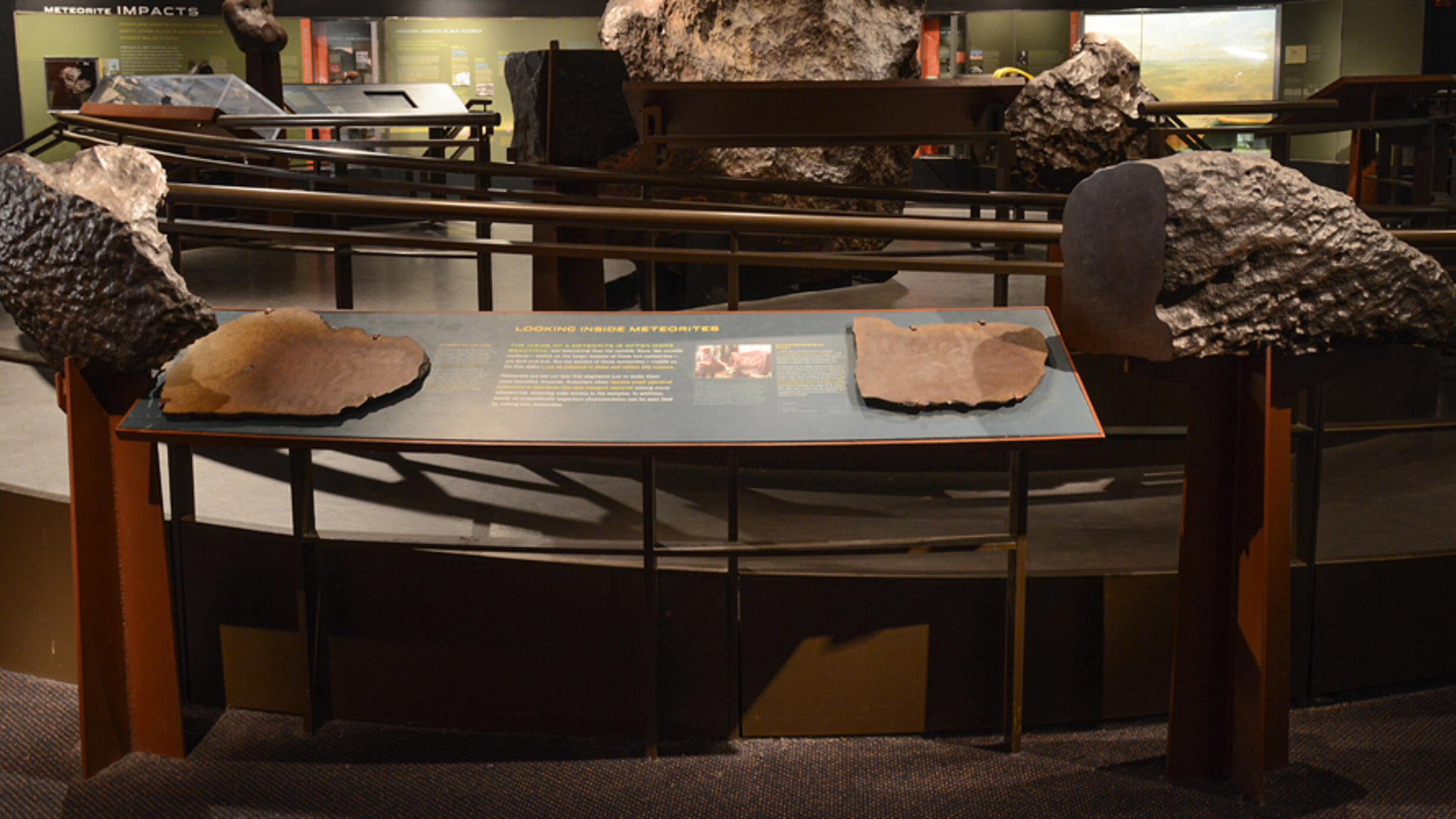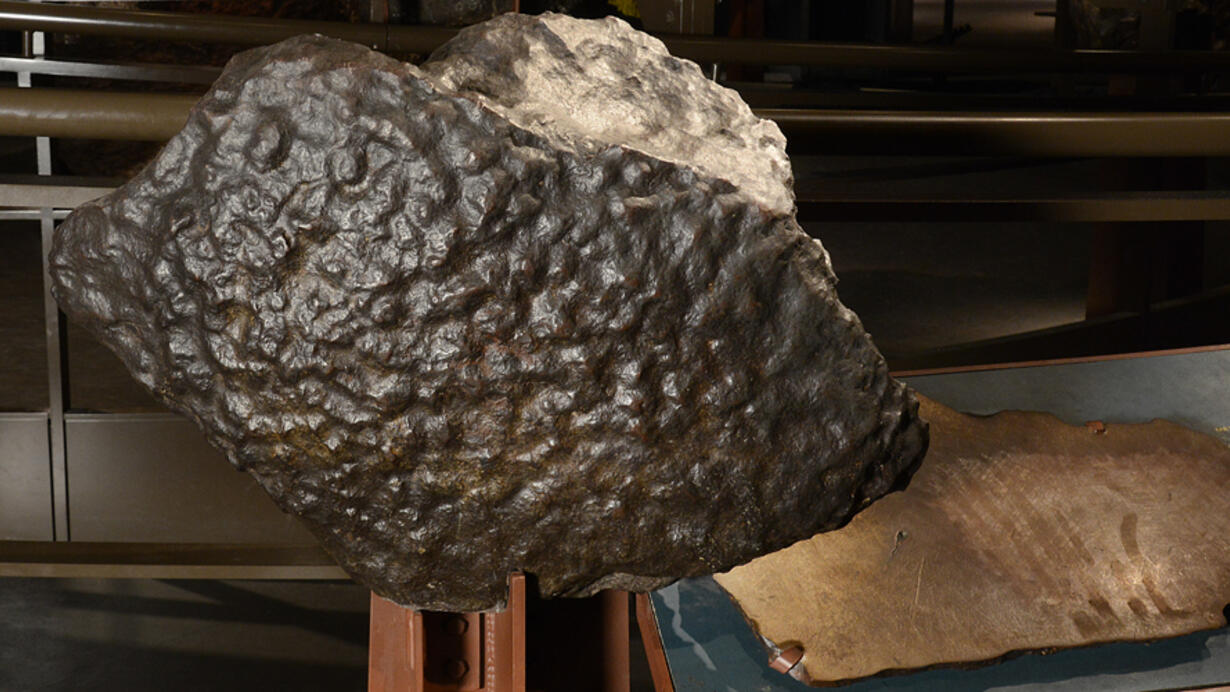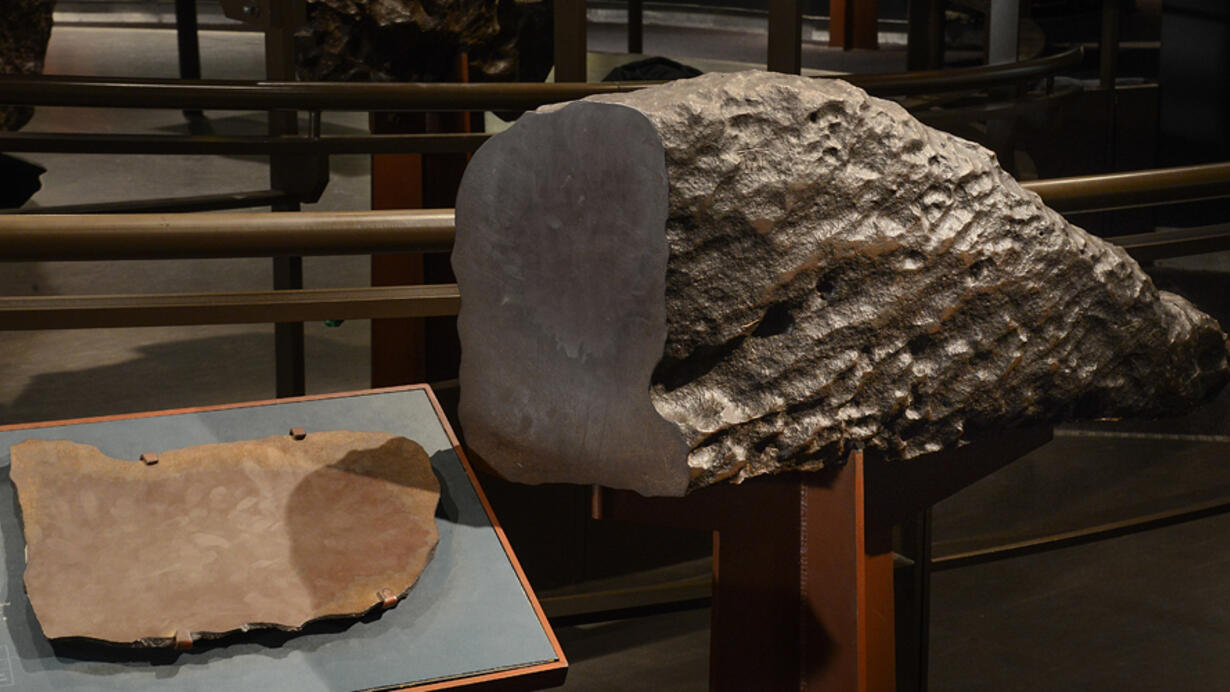Looking Inside Meteorites
Part of Hall of Meteorites.

The inside of a meteorite is often more beautiful and interesting than the outside. Here, the outside surfaces—visible on the larger masses of these two meteorites—are dark and dull. But the insides of these meteorites—visible on the thin slabs—can be polished to shine and reflect like mirrors.
Meteorites are not cut into thin segments just to make them more beautiful, however. Scientists often remove small pieces of meteorites to distribute this rare research material among many laboratories, ensuring wide access to the samples. In addition, nearly all scientifically important characteristics can be seen best by cutting into meteorites.
In This Section

Gibeon (AMNH 3752, AMNH 4379)
Meteorites Are Cool
The Nama people of Namibia, in southern Africa, at one time made weapons from iron they hammered off the Gibeon meteorite. Numerous fragments of Gibeon have been identified across Namibia since a British scientist in the early 1800s recognized the iron as being of meteoritic origin.
The large mass of Gibeon on display has not been sliced; the slab was cut from a different piece of Gibeon. Like all metal, Gibeon is cool to the touch because it conducts heat away from your body. Examination of the slab reveals that Gibeon is made of metal that has crystallized in the so-called Widmanstätten pattern, found only in iron meteorites.
GIBEON
Found 1836
Great Nama Land, Namibia, Africa
IVA
AMNH 3752 (mass)
AMNH 4912 (slab)

Guffey
Extraterrestrial Steel
In 1907, while herding cattle in Colorado, two cowboys discovered this meteorite, a 309-kilogram (680-pound) iron mass. The American Museum of Natural History purchased the specimen, called Guffey, shortly thereafter.
No other pieces of Guffey have ever been found, yet several museums around the United States have samples of it. Over the years, researchers at this museum have removed small portions of the "main mass" of Guffey and sent them to other museums in exchange for other rare meteorite specimens. Such pieces also allow scientists to examine the inside of the sample. This slab reveals that the meteorite has a composition and structure much like that of manufactured steel.
GUFFEY
Found 1907
Park County, Colorado, USA
UNGROUPED
AMNH 213 (mass)
AMNH 4379 (slab)